
Once upon a time, gaming laptops were more of a meme than a serious option. Huge, hot, noisy — they tried to pack desktop power into a pocket-sized case with pocket ventilation. But today the situation has changed radically. Now we have real «laptops without compromise» with NVIDIA GeForce RTX 5000, which not only allow you to play Cyberpunk 2077 at ultra with ray tracing, but also do it on the go, on battery life and with performance that seemed impossible for mobile hardware a few years ago. So why did this revolution become real only now?
We have enriched the material with an important practical section: testing three MSI laptops equipped with the latest GeForce RTX 5000 mobile graphics cards. This allowed us to verify key points from the previous analysis with real-world examples, demonstrating how flagship models perform in everyday gaming, work tasks, and performance benchmarks. Hardware, numbers, temperatures, noise, FPS, and our honest impressions — all to show how next-gen GPU laptops are redefining the idea of «no-compromise mobility.»
Materials from ITC.ua reviews:
- MSI Titan 18 HX Dragon Edition Norse Myth Review: All the world’s power for all the world’s money
- MSI Raider 18 HX Review: The laptop that laughs in the face of desktops
- MSI Vector 16 HX AI Review: A laptop for those who want everything, all at once
Content
- 1 NVIDIA’s journey from compromise to uncompromising
- 2 A video card as the core of the ecosystem: a laptop has become a studio, not just a console on a keyboard
- 3 DLSS 4 — revolutionizing the quality and performance of gaming laptops
- 4 Laptops with RTX 5000 in action: mobile gaming without compromise?
- 5 New levels of creativity and productivity with NVIDIA Studio on RTX 50 Series laptops
- 6 NVIDIA Reflex 2 and low latency — the secret to winning mobile gaming
- 7 Energy saving and cooling — how the RTX 50 Series opens up new horizons for mobility
- 8 Why now? A technical breakthrough and a market ready for uncompromising laptops
NVIDIA’s journey from compromise to uncompromising
Five years ago, the word «gaming laptop» meant a compromise. Often a painful one. From thermal limitations to limited cores, cut-off frequencies, and batteries that last an hour and a half at most. With the release of the NVIDIA GeForce RTX 20 Series (Turing) in 2019, NVIDIA brought ray tracing to mobile for the first time, but in reality, it was more of a demo version of «great» graphics. The laptop GeForce RTX 2060 and 2070 were significantly weaker than their desktop counterparts, and even the Max-Q versions sometimes lost up to 30-40% of performance.
The Max-Q technology itself seemed like a great idea — to give the maximum in a minimum form factor. But in fact, it turned the video card into a disguised compromise: lower frequencies, limited TGP, and no manual overclocking (for enthusiasts). Users had to choose between a hot monster with a short lifespan or an elegant but weaker laptop. Neither option was truly uncompromising.
The breakthrough began with Ampere (RTX 30 Series). NVIDIA redesigned the architecture, doubled the number of CUDA cores, added the 2nd generation of RT cores and DLSS 2.0. But the most important thing is that laptops with almost full mobile RTX 3080s (up to 150W and above!) appeared, which began to really approach the desktop level. Of course, the battery life suffered and the weight increased, but a laptop with RTX 3080 could run Cyberpunk 2077 with raytracing — and this was a new stage.
However, the real «annihilation of compromises» only happened with Ada Lovelace (RTX 40 Series). For the first time, NVIDIA offered mobile DLSS 3 with frame generation, which allowed laptops to not only catch up with desktops, but sometimes outperform them in real FPS — thanks to lower display resolutions and more aggressive scaling. The RTX 4070 in a laptop could pull 4K DLSS in Red Dead Redemption 2 — something that RTX 2070 owners could only dream of.
The GeForce RTX 50 Series, which finally brought Blackwell-optimized chips (including improved NVENC, DLSS 4, and Multi Frame Generation) to laptops, has effectively broken the last barriers. Laptops with RTX 5080 finally got TGP up to 175W, full noise reduction, improved power consumption, and a new class of displays: 16-18 inches, 120/240 Hz, Mini-LED. That is, iron is no longer holding back the shape.
Now mobile graphics cards — are no longer an attempt to «squeeze» a desktop into a case. This is a separate, full-fledged GPU class optimized for laptop infrastructure. Such graphics solutions are not only as good as, but even better than desktops in some tasks: rendering, AI computing, video work. This uncompromising approach is possible precisely because NVIDIA is no longer trying to «mobilize» desktop, but is building GPUs from laptops as a priority platform.
A video card as the core of the ecosystem: a laptop has become a studio, not just a console on a keyboard
Before the RTX 40 Series, many people thought of a gaming laptop as a replacement for a console, not a PC. Sit down, turn it on, play — and forget it. But with the RTX 4080 and 4090, it became clear that a laptop can be not just a gaming machine, but the center of a work and creative ecosystem. NVIDIA made this possible by putting its hand not only to the «hardware», but also to the software: Studio Drivers, RTX Remix, NVIDIA Broadcast, Canvas, Omniverse, DLSS SDK — all of which are tailored for laptops.
With the RTX 50 Series, NVIDIA is finally cementing this trend. Now every GeForce RTX laptop is a platform for AI, video production, streaming, and 3D rendering. The new Blackwell mobile line of cards brings additional instructions for AI acceleration, an improved encoder for 4K HDR video, and even lower latency for Reflex —, all in a mobile package.
Thanks to this, a laptop is no longer a compromise not only for gaming but also for professional work. For example, a modern laptop with RTX 5080 can run Blender at the level of a studio PC, generate videos through Sora or Runway, stream from OBS with zero lag, and simultaneously render, code, and test a game in Unreal Engine 5.
NVIDIA’s approach also plays an important role here: most new technologies are released simultaneously on both desktops and laptops. In the past, driver updates, DLSS or Reflex support came to mobile chips with a delay. Today, everything is synchronized. Even partner solutions (ASUS ROG, MSI Titan, Lenovo Legion) work with NVIDIA as a key vendor, not «video card manufacturer».
The RTX 50 takes this one step further: with features like ACE (Avatar Cloud Engine) and RTX Video Super Resolution 2.0, laptops are becoming not just a tool for consuming content, but an active participant in its creation. Imagine a laptop that improves video quality in a browser, adds frames to an animation, or optimizes a scene in Unity – it’s already a reality.
DLSS 4 — revolutionizing the quality and performance of gaming laptops
The new generation of NVIDIA’s proprietary Deep Learning Super Sampling technology redefines the concept of compromise in laptop gaming. Previously, picture quality had to be sacrificed for FPS, or vice versa — performance had to be reduced for the sake of detail, but now the situation is different: DLSS 4 offers everything at once.
At the heart of DLSS — deep learning neural networks that analyze millions of game frames and derive upscaling algorithms that are so efficient that you will hardly notice that the game is actually rendered at a lower resolution.
DLSS 4 — a symbiosis of hardware and AI: NVIDIA has combined Blackwell GPU Tensor cores with new frame recovery networks to achieve near-native quality in even the most dynamic games.
DLSS 4 is not limited to the upscaling alone — it includes improved frame generation (now called Multi Frame Generation), anti-aliasing, anti-aliasing, and motion compensation. This is a comprehensive system that allows you to double the FPS compared to DLSS 3 without noticeable quality loss, and sometimes — with improved visual perception.
Compared to DLSS 3, the fourth version does a better job of restoring details in complex scenes — better clarity, less phantom artifacts. The new Optical Flow Accelerator in the Blackwell architecture works in tandem with AI to make motion look as smooth as possible even with unstable rendering.
An example of desktop-level gaming performance from a flagship laptop MSI Titan 18 HX Dragon Edition Norse Myth with NVIDIA RTX 5090.
For another gaming test, we took the MSI Raider 18 HX AI laptop (reviewed on ITC.ua soon) with mobile RTX 5080 — NVIDIA’s top-of-the-line solution. We tested the latest Stellar Blade in Full HD, QHD, and 4K+. Without DLSS, the RTX 5080 demonstrates very high FPS even at Very High: over 180 in Full HD, over 120 in QHD, and about 70 in 4K+.
Screenshot of a gaming session on the MSI Raider 18 HX AI laptop with NVIDIA GeForce RTX 5080.
But the real revolution is DLSS 4 with Multi-Frame Generation. This technology almost doubles the performance: in Full HD, FPS increases from 184 to almost 500, in QHD — from 122 to over 300, and in 4K+ — from 68 to 150 FPS. DLSS 4 transforms mobile laptops from powerful to gaming monsters, delivering smoothness and detail never before possible on mobile GPUs.
Screenshot of a gaming session on the MSI Raider 18 HX AI laptop with NVIDIA GeForce RTX 5080.
| Technologies | FPS |
| No frame generation | 68 |
| DLSS 4 with Multi Frame Generation (x2) | 89 |
| DLSS 4 with Multi Frame Generation (x3) | 123 |
| DLSS 4 with Multi Frame Generation (x4) | 150 |
An example of Multi-Frame Generation in 3840×2400 resolution. Maximum graphics settings, DLAA.
Just as importantly, DLSS 4 saves energy: the GPU renders less, and AI — finishes the picture. This means less heat, less noise, and more battery life, which is critical for mobile gaming. For streamers and content creators, this technology is a gift: you can play, record, and broadcast simultaneously without significantly affecting the FPS or stream quality.
DLSS 4 is the cornerstone of the RTX 50 Series philosophy: «play without compromise». It opens the door to a new generation of gaming laptops where there is no need to choose between portability, graphics, and performance. This is the true future of mobile gaming — and it’s here.
Laptops with RTX 5000 in action: mobile gaming without compromise?
How can we really tell if laptops with GeForce RTX 5000 can replace desktops? No wishful thinking — just pick three models already running on NVIDIA’s latest mobile GPUs, run proper editorial reviews, and see it for yourself. That’s exactly what we did. Enter the three horsemen of mobile gaming: the Titan 18 HX, Raider 18 HX, and Vector 16 HX AI. Each of them shows a different facet of «no-compromise laptop performance, ” and together, they paint a complete picture of what RTX 5090/5080 Laptop is truly capable of.

Let’s start with the MSI Titan 18 HX Dragon Edition Norse Myth. A grand temple of power. Our configuration: RTX 5090 Laptop, Intel Core Ultra 9 285HX, 96 GB DDR5, 6 TB NVMe, and a 4K 120 Hz Mini LED display. The price? Nearly 300,000 UAH — enough to make you yell „Yikes!“ But the performance is just as astronomical. In Cyberpunk 2077 on Ultra with Path Tracing, it holds a steady 85–92 FPS at 3840×2400 resolution without any drops.
In Blender, it scored 7908.18 — one of the fastest results among mobile devices, and close to a desktop with RTX 4080 Super (8457.83).
An example of desktop-class gaming performance from the flagship MSI Titan 18 HX Dragon Edition Norse Myth with NVIDIA RTX 5090.
Next up, the MSI Raider 18 HX AI — the Titan’s so-called „little brother, ” though it’s almost a joke to call a 3.6-kg laptop with RTX 5080 „little.“
It features the same Intel Core Ultra 9 285HX but comes in a slightly more compact chassis. Its 18-inch WQUXGA (3840×2400) 120 Hz Mini LED. In benchmarks: 77+ FPS in S.T.A.L.K.E.R. 2: Heart of Chornobyl, 150+ FPS stable in Stellar Blade on Very High preset, DLAA, RT ON, and frame generation. Temps hover around 75–78°C, but the fan is loud — like a herald announcing a new gaming era.
An example of desktop-class gaming performance from the flagship MSI Raider 18 HX AI with NVIDIA RTX 5080.
The third contender is the MSI Vector 16 HX AI. The most compact of the trio, yet equally astonishing. It also packs a mobile RTX 5080. The display is a 16-inch IPS QHD+ (2560×1600) 240 Hz panel.
Vector surprised us with stable 250+ FPS in Doom: The Dark Ages with ray tracing, DLSS, Multi Frame Generation, and Ultra Nightmare settings — while staying relatively quiet even under full load. GPU temps reached 73°C, with heat focused in the center of the chassis and no hot spots under the palms.
An example of desktop-class gaming performance from the flagship MSI Vector 16 HX AI with NVIDIA RTX 5080.
All three laptops support AI features: NVIDIA Broadcast, frame generation, and Studio drivers for creative workflows. Usual caveats like „laptop versions are weaker“ don’t apply as much anymore. In gaming scenarios, the RTX 5080 in the Vector beats the desktop RTX 4070 Ti Super — and in titles with Multi Frame Generation, it leaves it far behind.
Our biggest discovery? The line between desktop and laptop is now more about form than function. The Titan is a workstation replacement, the Raider is a true desktop gaming alternative, and the Vector strikes a balance between a gaming ultrabook and a render-ready machine. All three prove that RTX 5000 is genuinely capable of powering gaming, content creation, streaming, and even AI training — without the dreaded „maybe I should just build a PC.“
Of course, there are caveats. The Titan and Raider need to stay close to a power outlet, and while the Vector is more efficient, the battery still won’t last long — which is fine, since these are mobile desktops, not „fifth-wave café MacBooks.“ The Titan and Raider have incredible thermal designs, but they require a dedicated backpack and desk. Forget using them on your lap.
The verdict is simple: RTX 5000 laptops are real hardware monsters. The Titan, Raider, and Vector are proof that NVIDIA has successfully crammed desktop-grade power into a mobile form factor. Is it worth it? If you want no-compromise gaming — absolutely.
New levels of creativity and productivity with NVIDIA Studio on RTX 50 Series laptops
RTX 50 Series gaming laptops have also become powerful tools for content creators, designers, video editors, and 3D artists.
NVIDIA Studio technology is integrated into the drivers and hardware platform of the RTX 50 Series, enabling acceleration in professional applications such as Adobe Premiere Pro, Blender, DaV-Ray, Autodesk Maya, and more.
Pictured here is the MSI Vector 16 HX AI laptop, which came to us for editorial review.
Optimization for CUDA, OptiX, and Tensor cores provides significant acceleration of rendering, ray tracing, and video processing in real time. This allows you to reduce the time spent on creating projects and focus on the creative process.
Thanks to Blackwell’s powerful architecture, RTX 50 Series laptops can handle large amounts of data and complex 3D scenes without compromising on desktop performance.
NVIDIA Studio also supports hardware-based encoding and decoding of high-definition video, which is useful for streamers and video editors who need a fast, high-quality stream.
This means that creative users can work seamlessly with 4K video using the acceleration provided by the RTX 50 Series, which significantly improves performance and reduces latency.
In addition, stable NVIDIA studio drivers ensure software compatibility and stability, which is critical for professional use. RTX 50 Series laptops turn mobile systems into full-fledged workstations that fit easily into a backpack, while retaining all the benefits of desktop solutions.
Pictured is a laptop MSI Vector 16 HX AI.which came to us for editorial review.
For creators, this means they can work anywhere without losing productivity or compromising on quality.
The RTX 50 Series thus opens up new possibilities for creativity and productivity on mobile platforms, combining gaming and professional work in one device.
NVIDIA Reflex 2 and low latency — the secret to winning mobile gaming
When it comes to uncompromising gaming laptops, it’s important to mention NVIDIA Reflex 2 — technology that significantly reduces system latency and improves game responsiveness.
Reflex 2, combined with powerful RTX 50 Series GPUs, allows gamers to react faster to in-game events, which is especially important in competitive shooters and eSports.
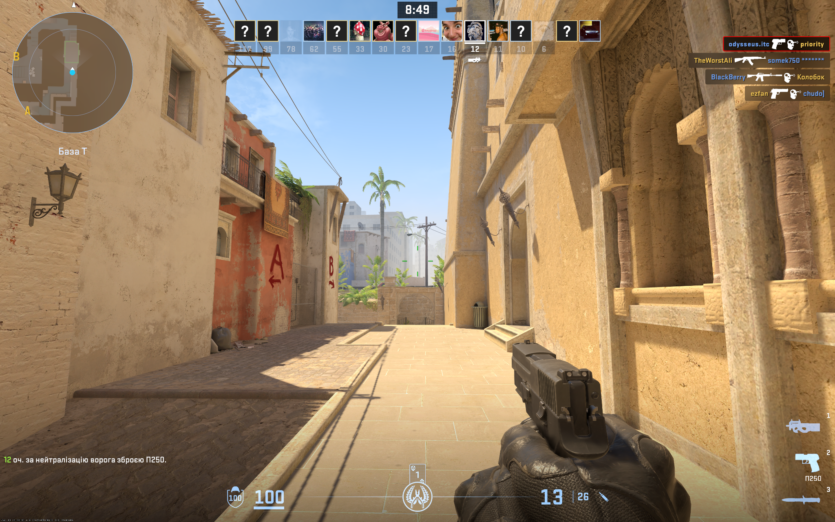
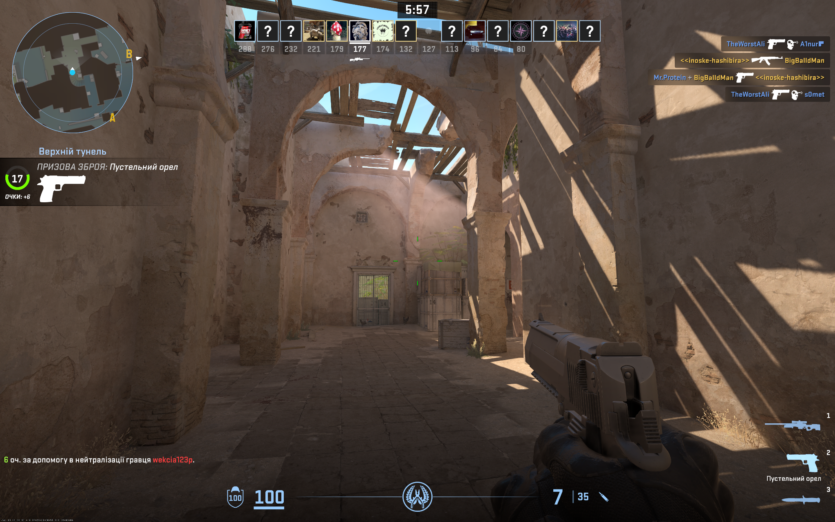
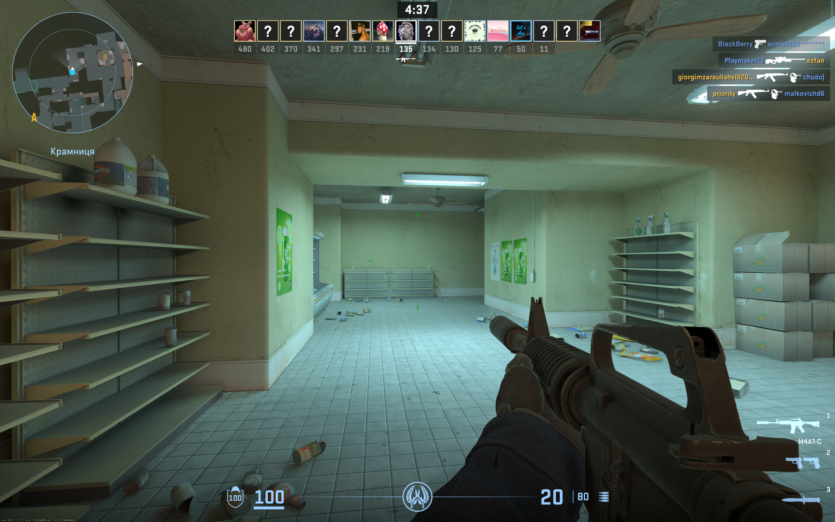
An example of a gaming session on the MSI Vector 16 HX AI A2XWHG-232XUA laptop with NVIDIA GeForce RTX 5070Ti, which we received for review from our partners — Telemart.ua.
Low latency means that the command from the player reaches the server and returns with minimal delays, which gives a tangible advantage during fast firefights and tactical maneuvers.
This is a revolution for mobile platforms, as previously laptops often lagged behind desktops in terms of responsiveness due to hardware limitations and optimization difficulties.
Reflex 2 implements a comprehensive approach: from driver and GPU optimization to monitor synchronization, which reduces the time from button press to on-screen response.
This technology also integrates with high-frequency laptop displays that support refresh rates of 240 Hz and higher, providing an extremely smooth picture without tearing or lag.
With Reflex 2, gamers on RTX 50 Series laptops have tools at their disposal that were previously only available to professional desktop gamers. The advanced latency measurement and reduction system now not only optimizes game response, but also paves the way for full use in competitive disciplines — Reflex 2 support is already implemented in more than 150 games, including the most popular eSports titles.
Also, Frame Warp technology is introduced for the first time — intelligent frame processing for even more accurate positioning of objects on the screen at high dynamics, which is critical for shooters and RTS.
Frame Warp — is exactly the case when engineering magic becomes the new standard of gameplay. The idea is simple but cool: while the video card is rendering the current frame, the processor is already calculating where you moved the camera, for example, with the mouse or stick. And so, instead of waiting for the next frame, the system simply «bends» the already finished frame to a new angle. This is done literally at the last moment — before the image goes on the screen. The result is — less lag, more of a feeling that your virtual character is reacting instantly to your movements.
Of course, this trick has a side effect — when the viewing angle shifts, small «holes» in the image may appear. But NVIDIA is not one of those who leave flaws. Frame Warp pulls in data from previous frames — colors, depth, camera position — and sews these holes almost imperceptibly. As a result, the frame looks coherent, even if you just moved the mouse 90 degrees. In shooters, this is immediately noticeable: the aim is more accurate, enemies don’t «jump» across the screen, and you manage to make a shot exactly when you need to. Not promises, but a tangible difference.
Reducing latency also has a positive effect on streamers and content creators, who can more accurately convey real-life gaming experiences to their audience.
Energy saving and cooling — how the RTX 50 Series opens up new horizons for mobility
For uncompromising gaming laptops, the key challenge has always been to combine high performance with efficient cooling and power savings. The RTX 50 Series takes this challenge to the next level.
Blackwell’s architecture is built with maximum energy efficiency in mind, allowing the GPU to operate at high clock speeds without excessive heat generation.
Importantly, innovative solutions in power supply and power management systems allow you to adapt the load to user scenarios — gaming, work, multimedia — which significantly extends battery life.
Vapor Chamber Cooler with an additional heat pipe for Gen5 SSD on the example MSI Titan 18 HX Dragon Edition Norse Myth.
NVIDIA RTX 5000 laptops feature next-generation cooling systems with heatpipes, optimized fan profiles, and vapor chambers that dissipate heat efficiently.
This allows for stable performance during long gaming sessions without trotting, which was one of the main problems with previous generations of mobile GPUs.
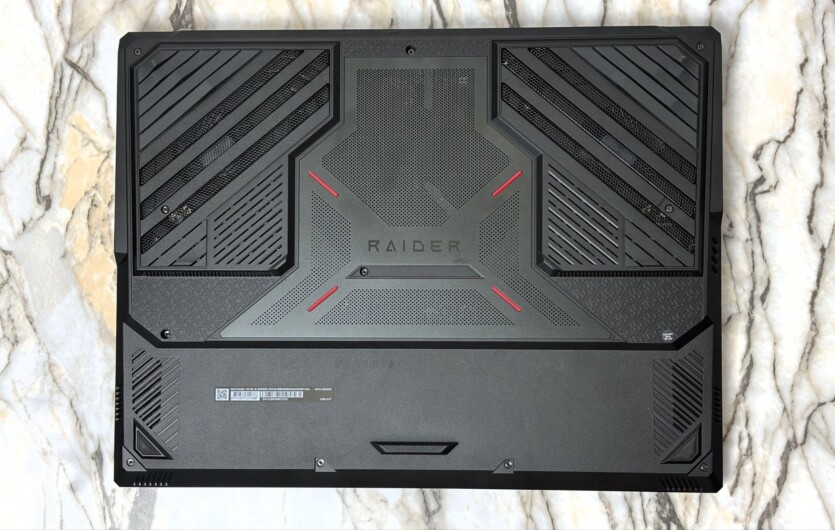
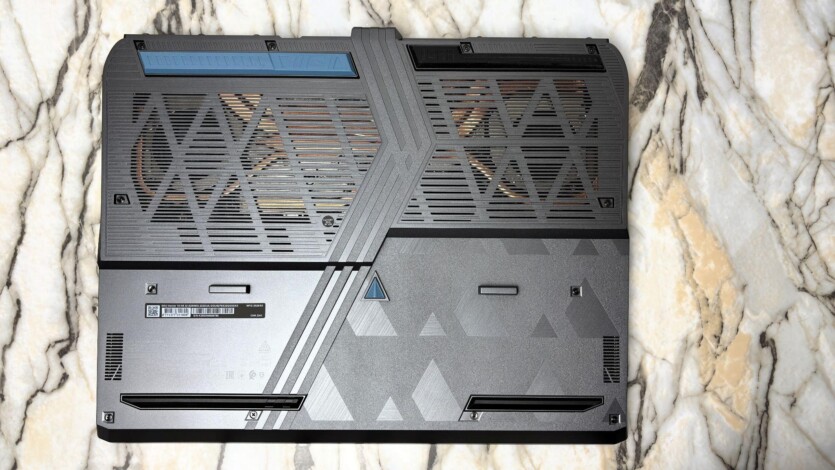
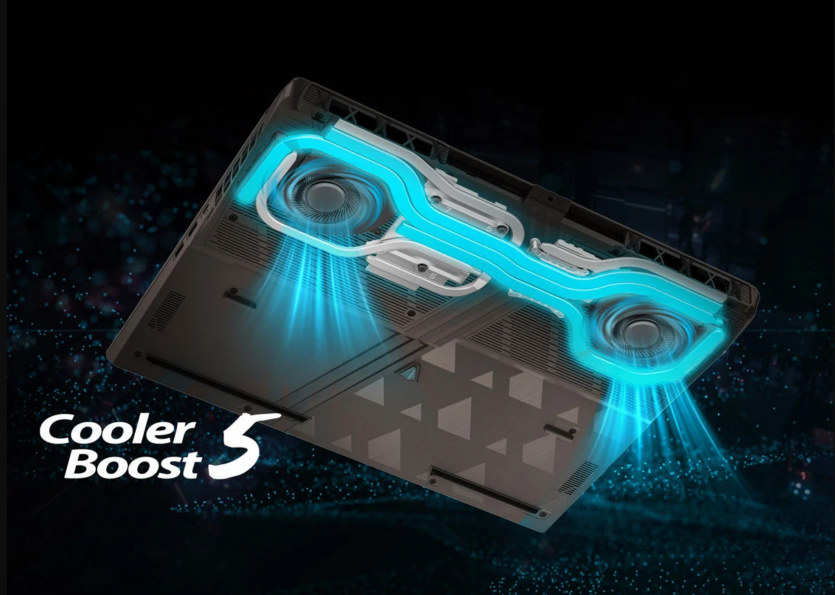
Cooler Boost 5 cooling system with 2 fans and 7 heat pipes. On the example of MSI Vector 16 HX AI and MSI Raider 18 HX AI laptops.
The energy efficiency of the RTX 50 Series also has a positive effect on the temperature of the laptop case, which improves user comfort — hands do not overheat and the device can be used on the lap.
The advanced power system allows laptops to remain relatively compact without adding weight or thickness for additional batteries or cooling.
This gives users a complete gaming experience that doesn’t force them to choose between performance and mobility.
Why now? A technical breakthrough and a market ready for uncompromising laptops
The emergence of uncompromising gaming laptops in 2025 is the result of a simultaneous breakthrough on several fronts. First of all, the NVIDIA Blackwell architecture, which finally made it possible to fit full-fledged desktop-level performance into a mobile form factor. Significantly higher energy efficiency, new Tensor and RT cores, and AI-oriented design made possible what seemed like a fantasy a few years ago: a laptop that doesn’t lose to a desktop PC in games and work tasks.
The combination of RTX 50 Series technologies played a separate role: DLSS 4 with Multi Frame Generation and Reflex 2 to minimize input latency. They allow laptops not only to maintain high FPS even in the most demanding titles, but also to provide image quality and gaming sensitivity that was previously only possible with a powerful desktop system. This is a key moment that changed the very paradigm of mobile gaming.
Another important factor is the readiness of the market and users. Manufacturers have finally revised the concept of laptops, relying on powerful cooling systems, battery life, and modern displays with a frequency of 240 Hz. At the same time, mobility requirements have increased: remote work, creative professions, and streaming gaming require equipment that «pulls everything» without being tied to a desk. And for the first time in history, the market has received such solutions without compromise.
Thank youTelemart.uafor the MSI Vector 16 HX AI laptop provided for testing. If you are looking atlaptops with RTX 50 series graphicsThis and other current models can be found on the Telemart.ua website.

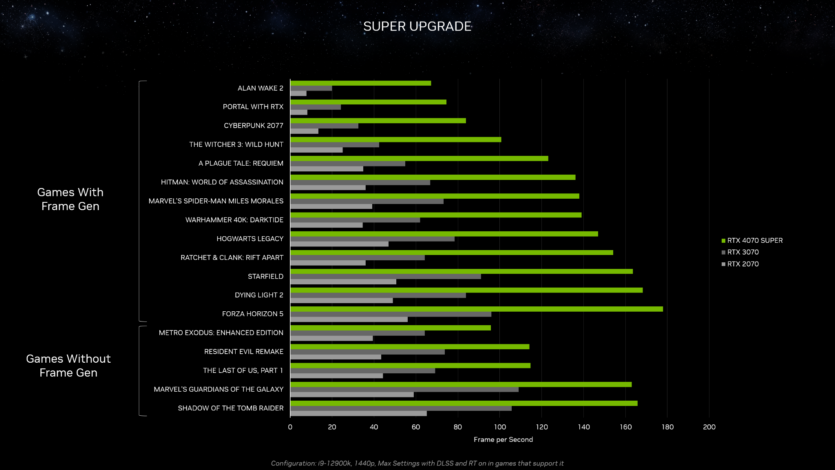
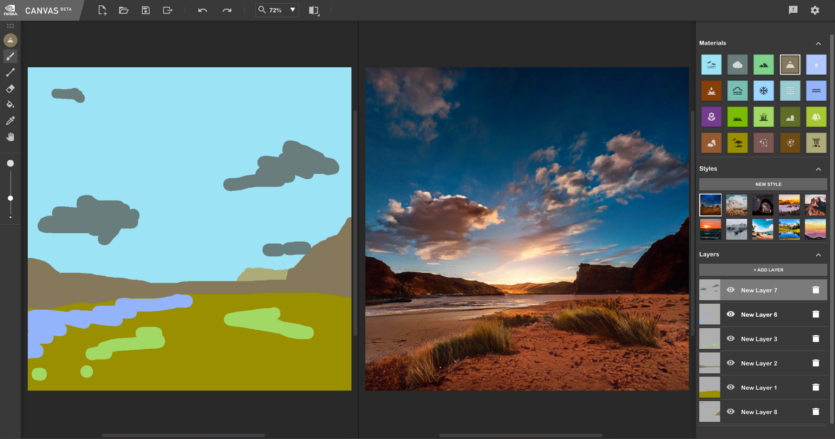
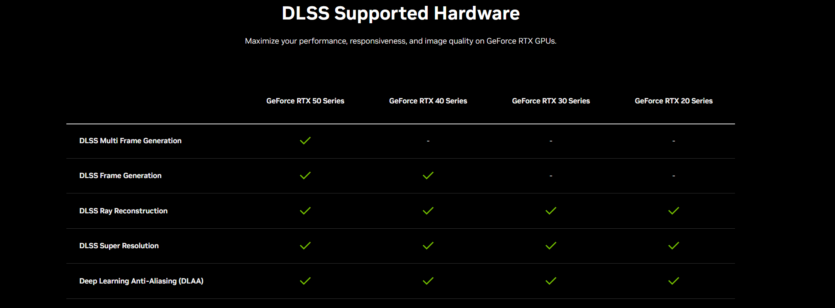




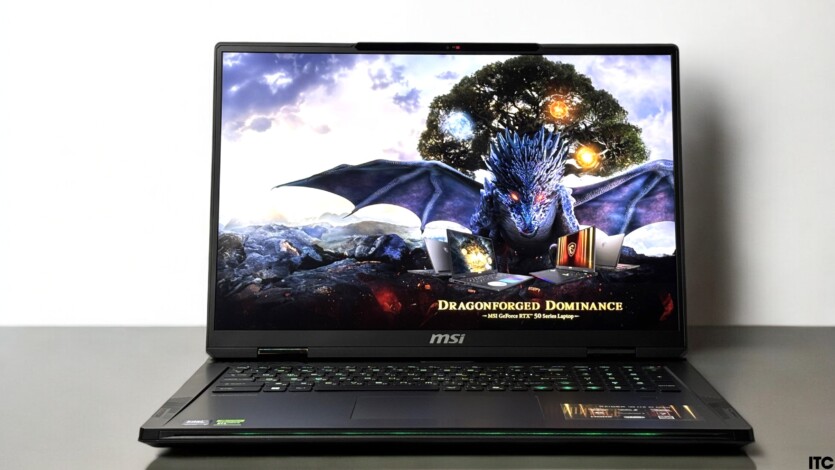
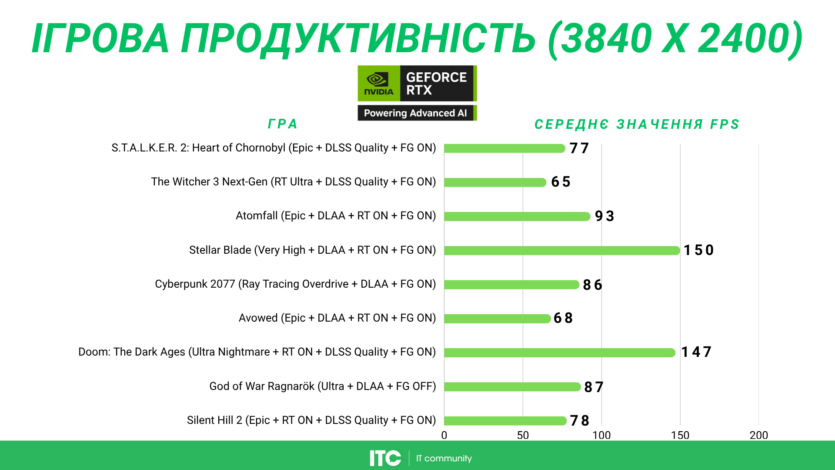
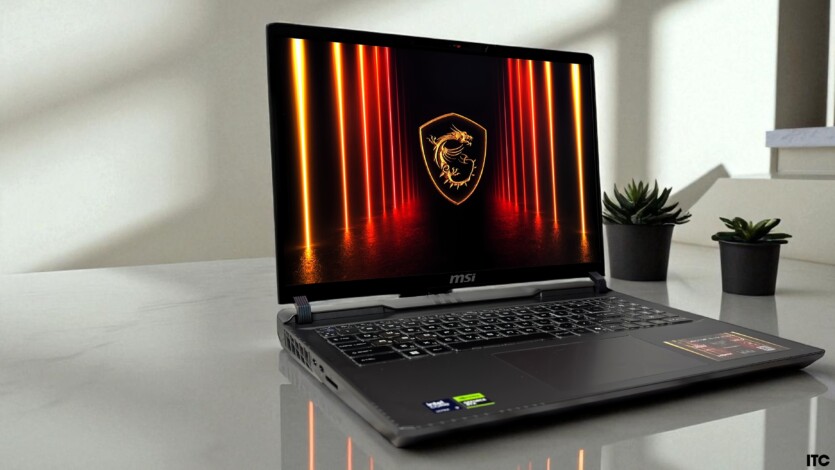
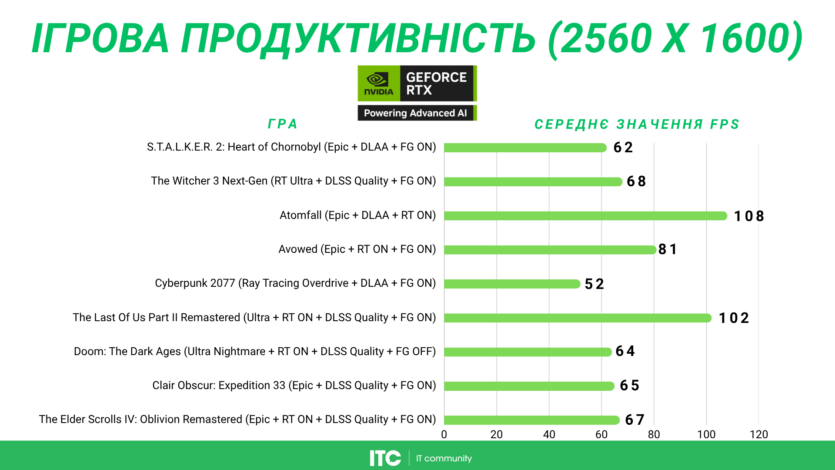

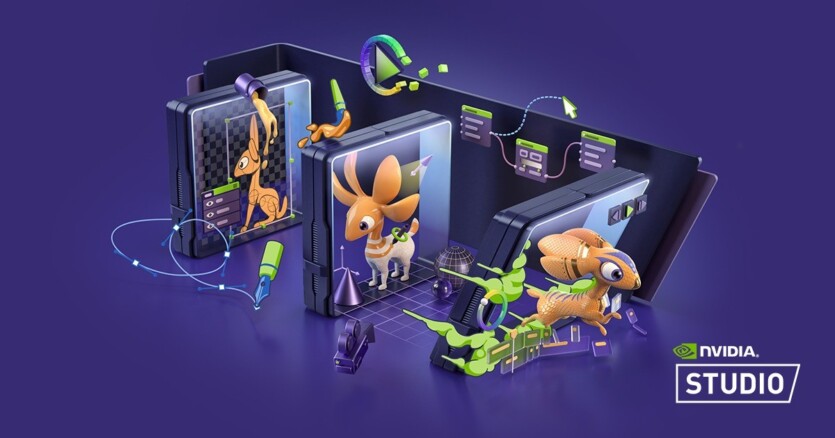

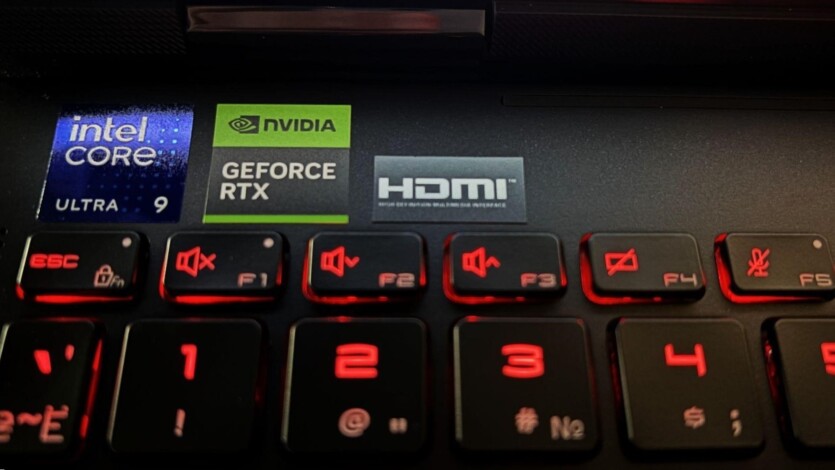
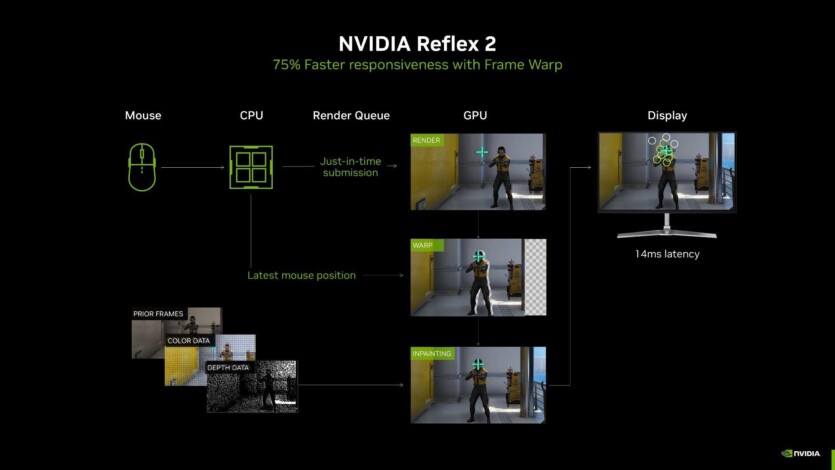

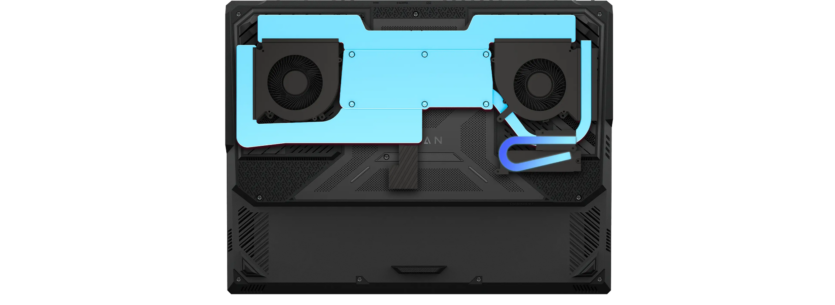

Spelling error report
The following text will be sent to our editors: